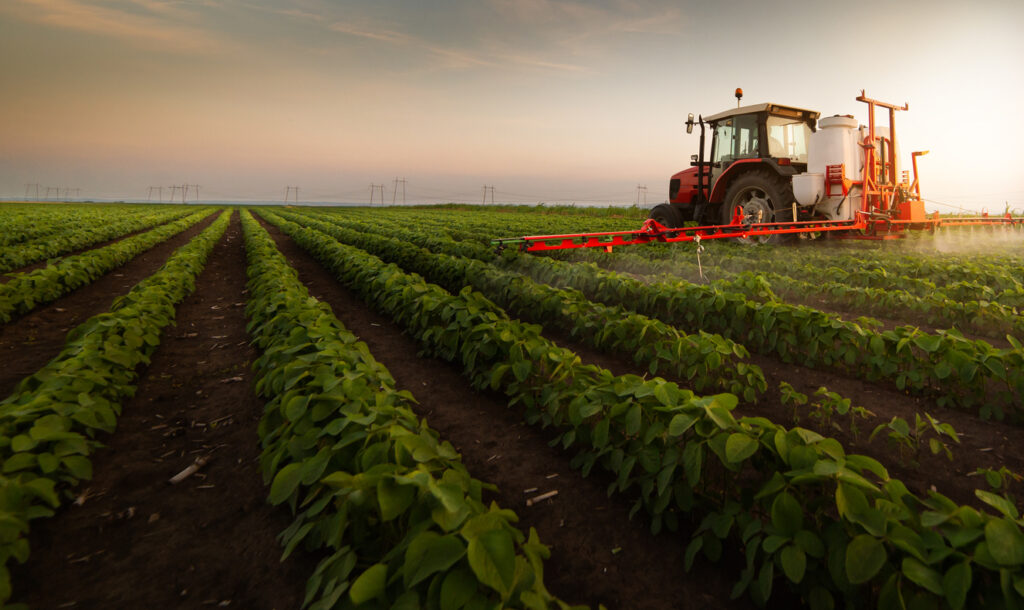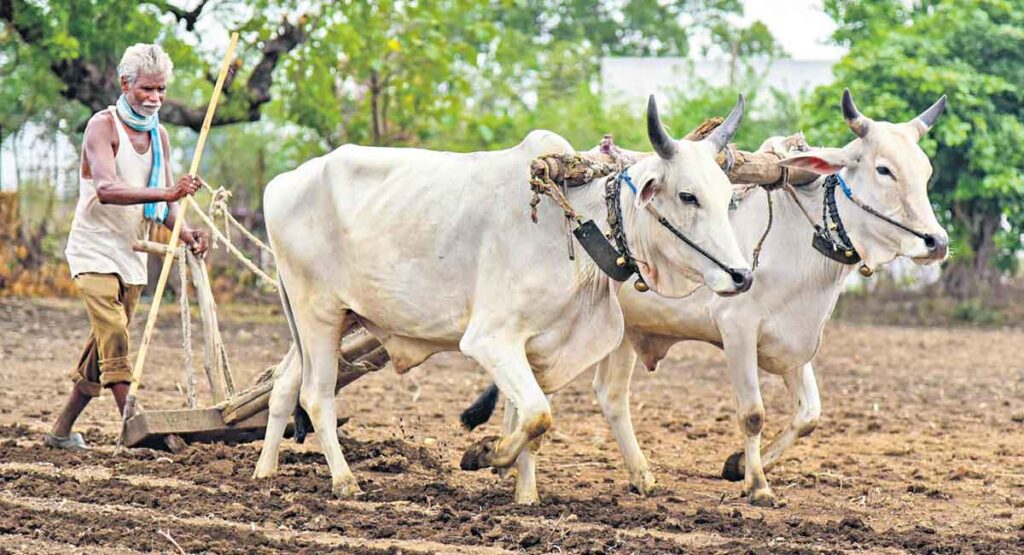Agriculture holds a pivotal role in the global economy, impacting the livelihoods of billions. From subsistence farming to large agribusinesses, substantial investments are essential for success. Agriculture finance, often through loans, offers the capital needed for equipment, seeds, fertilizers, and operational expenses. This guide navigates the intricacies of obtaining agricultural financing, catering to small-scale farmers and large agri-entrepreneurs.

Read more.. How to Apply Agriculture Loan and Insurance
Grasping Agriculture Finance
To embark on the journey of securing agriculture finance, it’s crucial to grasp its definition and significance:
Understanding Agriculture Finance: Agriculture finance comprises diverse financial services tailored to the unique requirements of farmers and agribusinesses. These services encompass agriculture loans, crop insurance, equipment leasing, and more, with the primary objective of providing capital to bolster the agricultural sector’s growth and sustainability.

Read more.. How Much Is Renters Insurance? 2023 Rates
Importance of Agriculture Finance:
Capital Access: Agriculture finance provides farmers and agribusinesses with the necessary funds for investments, ensuring they can purchase seeds, fertilizers, machinery, and cover other expenses to enhance productivity.
Risk Management: In the realm of agriculture finance, insurance products play a pivotal role in shielding farmers from unexpected occurrences such as crop failure or natural disasters, mitigating potential financial losses.

Read more.. Best Pet Insurance For Pre-Existing Conditions
Economic Growth: A flourishing agricultural sector substantially bolsters economic advancement through job creation, income generation, and heightened food production.
Food Security: Agriculture finance stands as a linchpin in upholding food security, empowering farmers to enhance yields and cater to the needs of the expanding global population.
Sustainable Practices: It fosters the adoption of sustainable and eco-conscious farming techniques by facilitating resources for innovation and progress.
Steps to Apply for Agriculture Finance
Applying for agriculture finance requires a structured approach, whether you are an individual farmer or a representative of a larger agricultural enterprise. Here are the essential steps to guide you through the process:

1. Assess Your Financing Needs
The first step in applying for agriculture finance is to assess your financial requirements. You need to determine precisely how much capital you need for your agricultural project or enterprise. Consider the following aspects:
Project Scope: Define the scope of your agricultural project, including its size, the type of crops or livestock, and the required equipment.
Budget and Expenditures: Develop a comprehensive budget that itemizes expenses like land purchase, equipment, seeds, labor, and operational costs.
Working Capital: Evaluate your day-to-day financial requirements, including labor and maintenance expenses.
Contingency Preparation: Allocate resources for unexpected occurrences like pest issues or adverse weather conditions, which may impact your crop yields.
2. Identify Suitable Lenders
Once you’ve determined your financing needs, the next step is to identify potential lenders who offer agriculture finance. Several financial institutions and organizations specialize in providing loans and financial products tailored to the agricultural sector. These can include:
- Commercial Banks: Traditional banks often offer agricultural loans and financing packages. Check with your local bank for available options.
- Agricultural Development Banks: Many countries have dedicated agricultural development banks that focus exclusively on supporting the agricultural sector.
- Microfinance Institutions: These institutions provide microloans to smallholder farmers and often have more flexible terms and requirements.
- Cooperative Credit Societies: In some regions, cooperative credit societies provide agriculture finance to members.
- Online Lenders: With the growth of digital finance, various online platforms and fintech companies offer agriculture loans.
- Government Programs: Some governments provide subsidies or low-interest loans to support agriculture.
Research and compare the offerings of these potential lenders, taking into agriculture loan interest rates, terms, and eligibility criteria to find the best fit for your financing needs.
3. Prepare Required Documents
Different lenders may have varying documentation requirements, but some common documents are typically requested during the application process. These may include:
Proof of Identity: This can be a national ID, passport, or any government-issued identification.
Ownership Documents: If you’re applying for a land purchase or development loan, you’ll need documents proving land ownership or lease agreements.
Business Plan: For commercial agricultural projects, a comprehensive business plan detailing your project’s scope, expected returns, and repayment plan is essential.
Financial Statements: Lenders might require your financial statements, such as income statements and balance sheets.
Credit History: Occasionally, lenders will request your credit history to evaluate your creditworthiness.
Collateral Documents: When applying for a secured loan, you must furnish details about the collateral you’re putting up.
Ensure you have all necessary documentation prepared and organized, as this will streamline the application process.
4. Choose the Right Type of Agriculture Loan
Agriculture finance offers various types of loans tailored to different needs. Here are some common agriculture loan types:
- Crop Loans: Designed to cover expenses related to crop cultivation, such as seeds, fertilizers, pesticides, and labor.
- Livestock Loans: For purchasing livestock or developing livestock-related businesses.
- Machinery and Equipment Loans: To acquire or upgrade agricultural machinery and equipment.
- Land Purchase Loans: Specifically for purchasing land for agricultural purposes.
- Working Capital Loans: These are short-term loans to cover operational costs, such as labor, maintenance, and utility bills.
5. Application Submission
With your financial requirements assessed, a lender chosen, and your documentation prepared, it’s time to submit your application. This can typically be done through the lender’s physical branch, their website, or an online application platform if dealing with an online lender. Ensure you complete the application form accurately and provide all
- Complete All Sections: Fill out all sections of the application accurately and thoroughly. Even if a section seems optional, providing comprehensive information can strengthen your case.
- Proofread and Edit: Take the time to proofread your application for any errors in spelling, grammar, or formatting. A well-polished application reflects your attention to detail and professionalism.
- Meet Deadlines: Adhere to application deadlines. Late submissions are typically not accepted, and missing a deadline can be a missed opportunity. Set reminders to ensure you submit on time.
- Additional Materials: If you need to submit additional materials, such as a portfolio of work or a statement of purpose, ensure they align with the application’s requirements and are presented professionally.
- Recommendation Letters: If the application requires recommendation letters, contact your references well in advance, providing them with all the necessary details. Follow up to ensure they submit the letters before the deadline.
- Payment: Some applications may involve application fees. Pay these fees, if required, using the specified method and keep a record of the transaction.
- Confirmation: After submitting your application, you should receive a confirmation or receipt. Keep this for your records as proof of submission.
- Follow-Up: If you don’t receive confirmation within a reasonable time, consider following up with the organization to ensure they received your application.
- Respect Privacy: When submitting personal information, be mindful of privacy and data security. Only provide the information requested in the application and avoid sharing unnecessary sensitive details.
- Track Progress: Keep a record of the applications you’ve submitted, including deadlines, outcomes, and any feedback received. This can help you stay organized and make informed decisions for future applications.
- Stay Positive: Finally, maintain a positive attitude throughout the application process. Rejections are a part of life, and they provide opportunities for growth and improvement. Keep applying and learning from your experiences.






